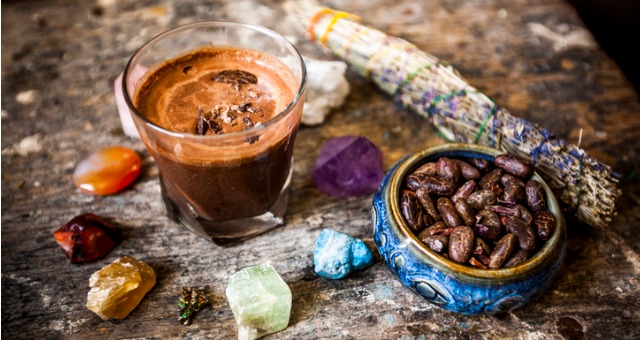At our university’s inaugural faculty-staff research symposium last fall, the two of us met on a drug history and policy panel, and discovered we were both teaching courses on drugs the following semester. What would happen if we connected our courses? Over coffee, we met several times and came up with a list of shared activities and projects, ranging from a student-created pop-up exhibition to a discussion panel on harm reduction that would bring university faculty and staff together with front-line public health workers. We were excited to start the semester and curious to see our students’ reactions.
Setting the Stage
For decades, universities have been touting the benefits of both interdisciplinarity and collaboration. Although there is plenty of published research supporting both practices, collaborative courses remain rare at many institutions. There are plenty of barriers. Administrators have pressure on them to make sure the maximum number of students are taught. Faculty do not like giving up control of their classrooms and teaching styles are not always compatible. Students can feel anxious about meeting the expectations of multiple professors, and sometimes become even more anxious – and extremely confused – when presented with new and unfamiliar activities – or, in the words of one of our students, “Why are we spending two weeks making linoleum-block posters and ‘zines when this is supposed to be a class about the history of drugs in America?” And, we haven’t even started talking about our medicine woman-led cacao ceremony.
It wasn’t all pop-up exhibitions and cacao ceremonies. One of us is from American Studies and the other from Sociology, and our readings for the courses reflected our disciplines. We still kept a lot of the material we had originally planned on using and did not overlap that much in terms of readings or even the way assignments were structured. In other words, this was “parallel play” rather than co-teaching. Our courses were entirely distinct, though connected, and the connection was grounded in a network of relationships across campus.
Campus and Community Collaborations
What we discovered, above and beyond all of those well-documented benefits of interdisciplinarity and community engagement for students, are some less-discussed benefits for both faculty and staff. Simply put, over the course of the semester we built a community of faculty and staff surrounded around the subject of drugs and addiction from many different angles. This collaboration also extended out into the community in which our university is, sometimes uncomfortably, located. In an effort to help students feel comfortable seeing our partners as accessible resources both within and beyond the course, we made sure that each of our partners interacted with our students more than once.
Our central shared assignment emerged from an initial meeting where Steel mentioned how, since graduate school, he had a dream of creating a museum on the war on drugs while Browder frequently incorporated exhibition assignments into her courses. Fortunately, we had a wonderful museum educator and Celtic medicine woman on campus. Martha Wright, guided the exhibition-creating process, as well as a cross-class cacao ceremony. At the time, the campus museum was also developing a new program for which faculty could select works from the museum’s permanent collection and create exhibitions tailored to their classes. Wright asked if we wanted to be part of the pilot, and we eagerly agreed.
Experiential Learning
Separately, we brought our classes to the campus Pickles Gallery for a class meeting, during which Wright guided students’ reflections, and facilitated discussion about the art and its relevance for understanding course material. We were fascinated to see how our students reacted to the art we had selected in consultation with Wright. The most in-depth discussion centered around a 1960s illustration by underground comix artist R. Crumb of a well-dressed suburban girl encountering a classic “dope fiend.”
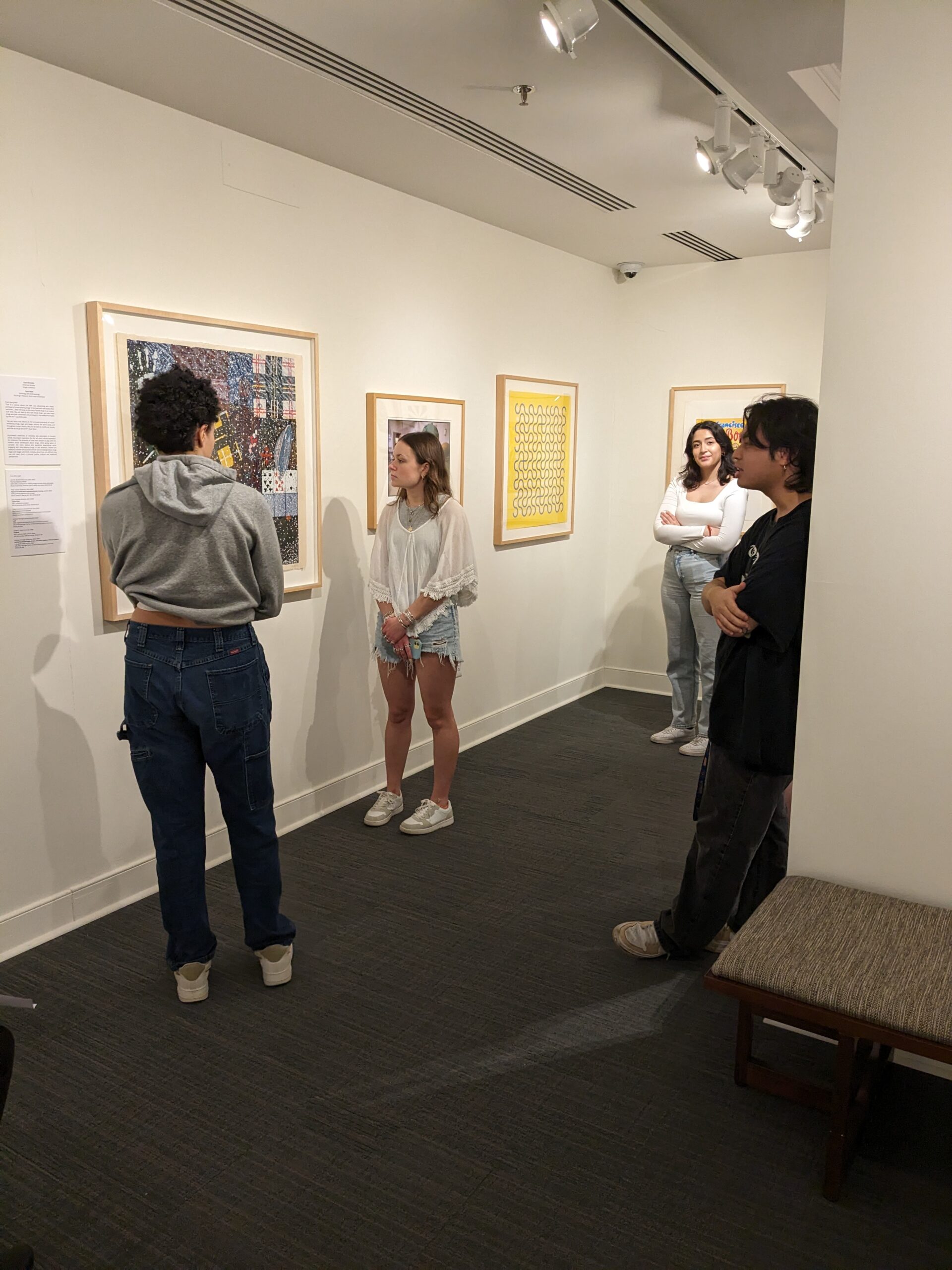
Most of the students had never been to the campus museum or our next site, the campus Book Arts Studio, where we worked with Book Arts program director, Jen Thomas. Thomas had proposed the students work in groups of four to create zines – self-published, handmade booklets focused on the history, laws, and pharmacology of their group’s chosen drug. Thomas guided students for three class meetings in the Book Art Studio on learning how to carve linoleum block images, the use of rolling print presses, and designing type-set posters and postcards they created to represent their group’s drug.
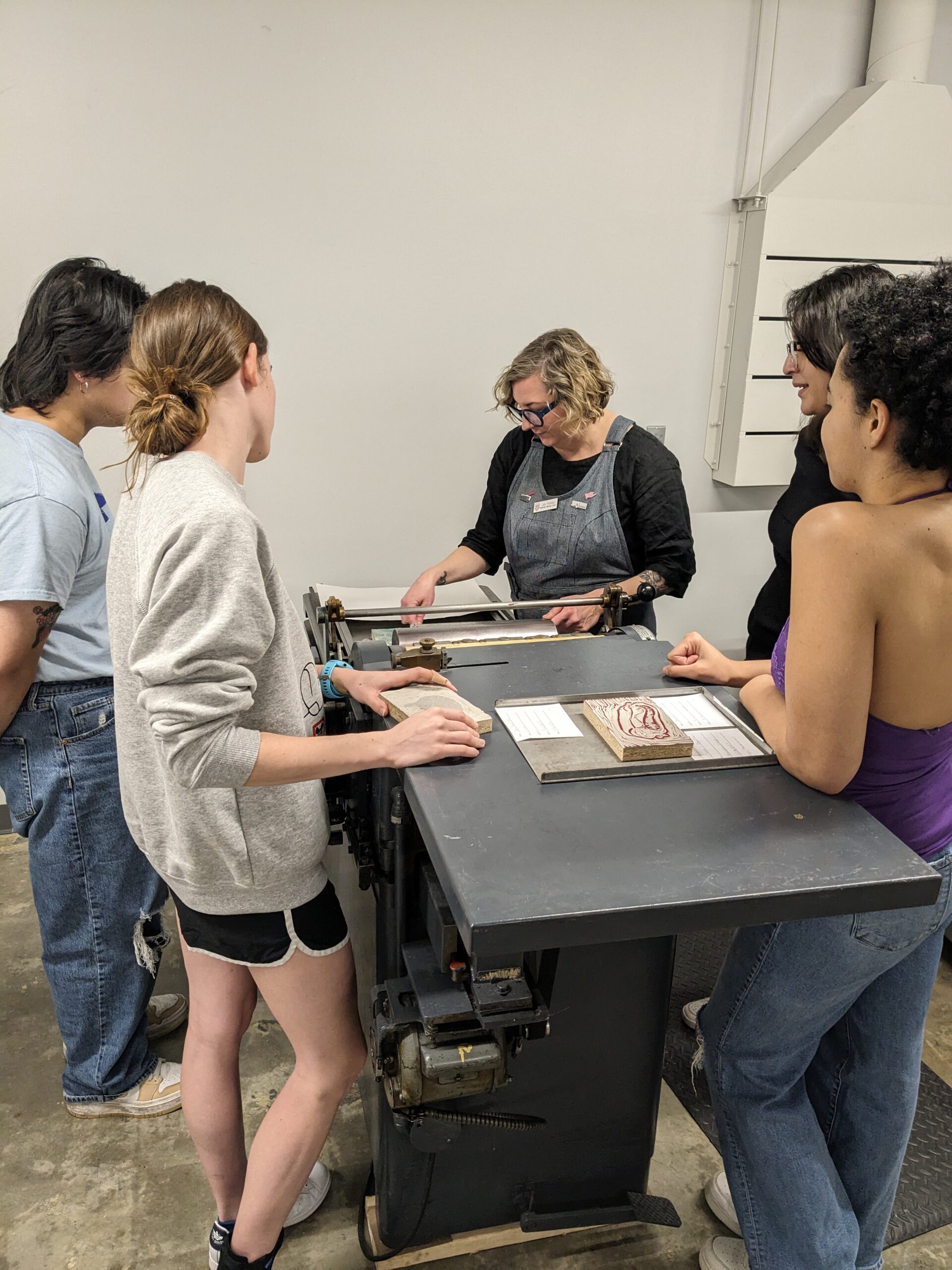
Our students staged a pop-up exhibition of their posters, postcards, and ‘zines at the university museum’s “Meet Me at the Museum” student social hour. Though initially most students lacked confidence in their artistic abilities and were hesitant about the linoleum block designs, their final products were gorgeous. They were proud to show off their work to their friends, even though most had initially expressed apprehension at the thought of creating, let alone exhibiting, art, especially art based on a scholarly-sourced mid-term paper.
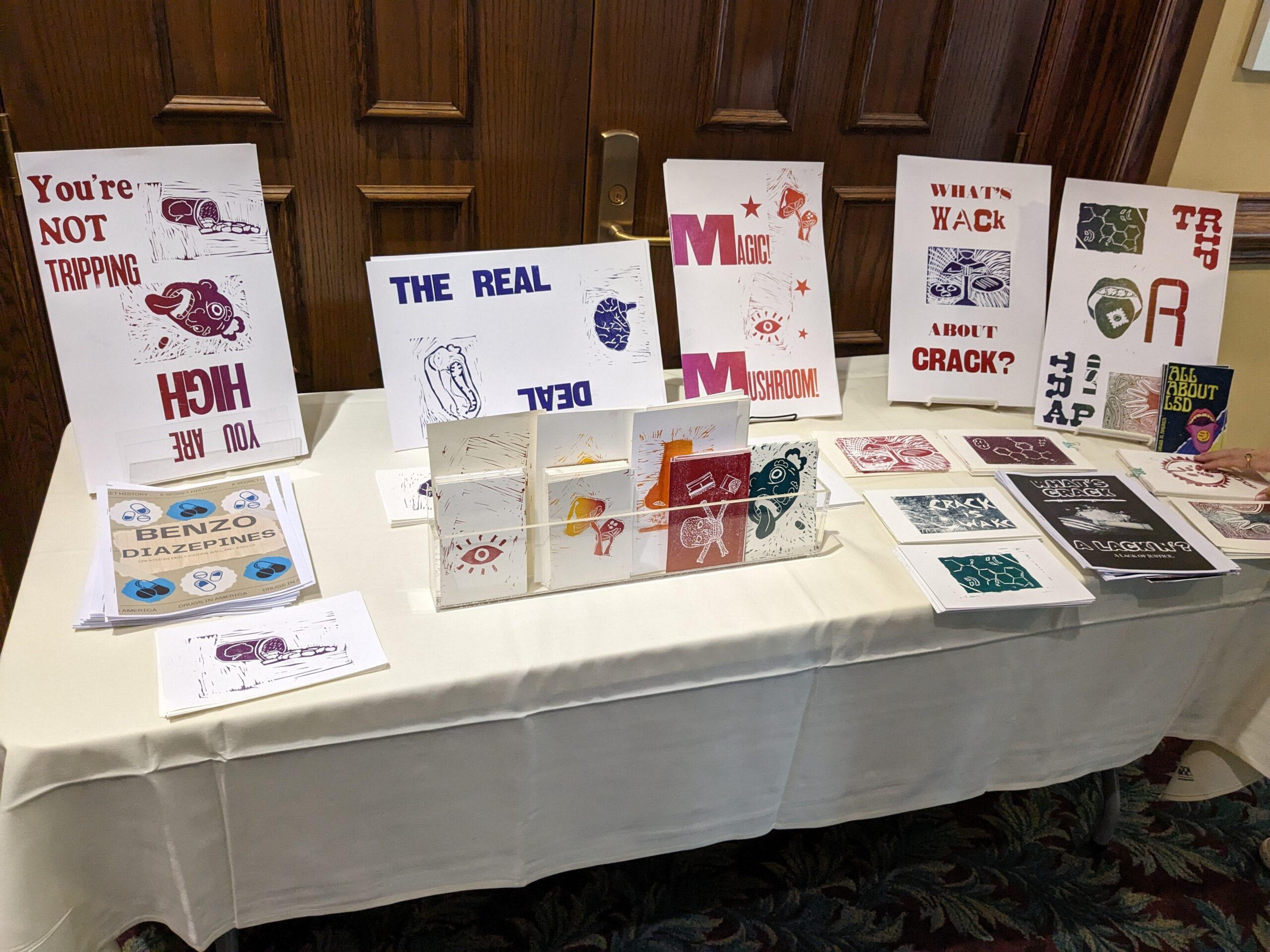
Broadening Student Research
To help students research their drugs, we turned to Paul Rosenstein, a campus research librarian with a PhD in Sociology and a dissertation focused on addiction. Each student worked with Rosenstein to find sources for their mid-term paper on a specific aspect of their group’s drug. Rosenstein’s involvement didn’t end there, he also guest-lectured in our classes about his experience working at a methadone clinic.
We wanted students to gain both interdisciplinary and practical knowledge about drugs and addiction. Courtney Blondino, an epidemiologist in the Health Studies department, whose research focuses on mental health and addiction comorbidities in Richmond, spoke about her research in our classes. Our campus’ recovery support specialist, Sarah King, also came to our classes to offer students Naloxone training, and spoke about addiction and our campus’ drug use landscape. While students didn’t discuss their own drug use, they were keenly interested in what King was seeing at the university.
All three of these classroom guest experts played key roles in a campus-wide harm reduction panel event that marked the culmination of the semester. Rosenstein and King were panelists, and Blondino both emceed the event and recruited two front-line harm reduction experts, Dziko Singleton and Deia Weatherman from Richmond’s Health Brigade, Virginia’s oldest and largest free clinic that offers medical, mental health, community outreach, and care coordination services for low-income and uninsured persons. During the panel, Singleton described racialized and gendered barriers to accessing substance use treatment, and both Singleton and Weatherman conveyed the harm reduction challenges with the recent emergence of xylazine. Following a lively panel discussion, students actively participated during Q&A. Not only did this extend and locally ground students’ understanding of harm reduction, it also provided an opportunity for students, faculty, and staff to connect with front-line workers in the community.
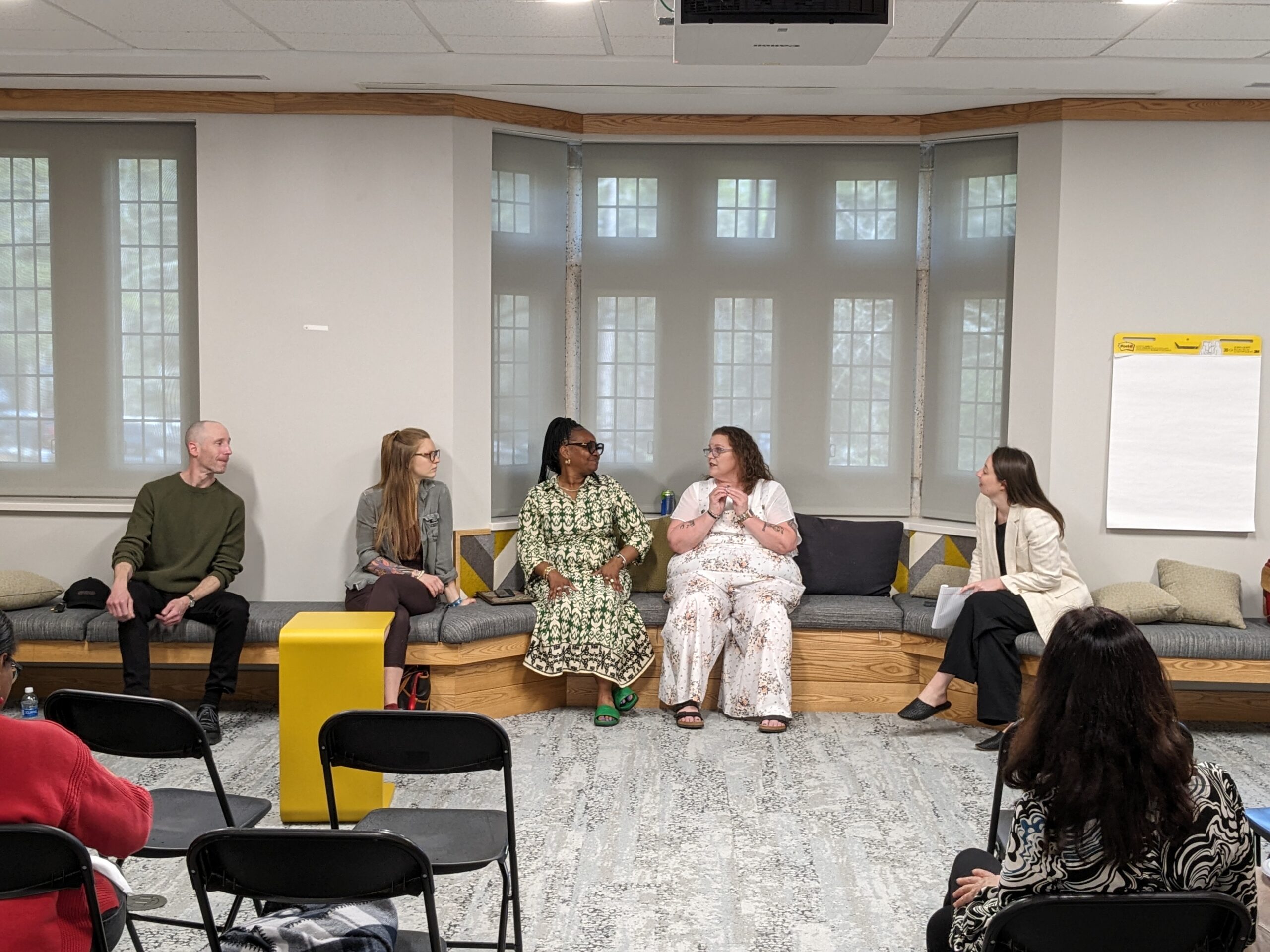
Reflections
At the end of the semester, the two of us talked about what the students had learned and what we had learned. We agreed that we had been far too ambitious in our plans, but we were also hard-pressed to say what we would have given up. Our students in their final reflections described how they appreciated breaking up the typical classroom experience, especially the cacao ceremony, as well as learning from community activists, outside experts, and artists.
The faculty-staff research symposium that initially brought us together formed the basis for a collaborative community. It may be hard to co-teach, but our parallel play model of linking courses and people helped us generate new ideas together, expanded our community, and made possible what neither of us could have achieved on our own. We know from our own experiences teaching elsewhere that not every university has a medicine woman, a book arts studio, or a catered museum event for students. However, every school has untapped resources in the form of great people within their staff and faculty. If interdisciplinary and collaborative teaching seems daunting, then building community around the class can be an inspiring and fruitful place to start.
Ryan T. Steel is an assistant professor in the Department of Sociology and Gerontology at Miami University (Oxford, Ohio). Prior to his current position at Miami, Steel taught for three years (2021-24) as a visiting faculty in the Department of Sociology and Anthropology at the University of Richmond.
Laura Browder is the Tyler and Alice Haynes professor in American Studies at the University of Richmond and is the author of numerous books and plays. She is currently completing “Breakneck Speed: America’s First Amphetamine Epidemic, 1945-1973.”

